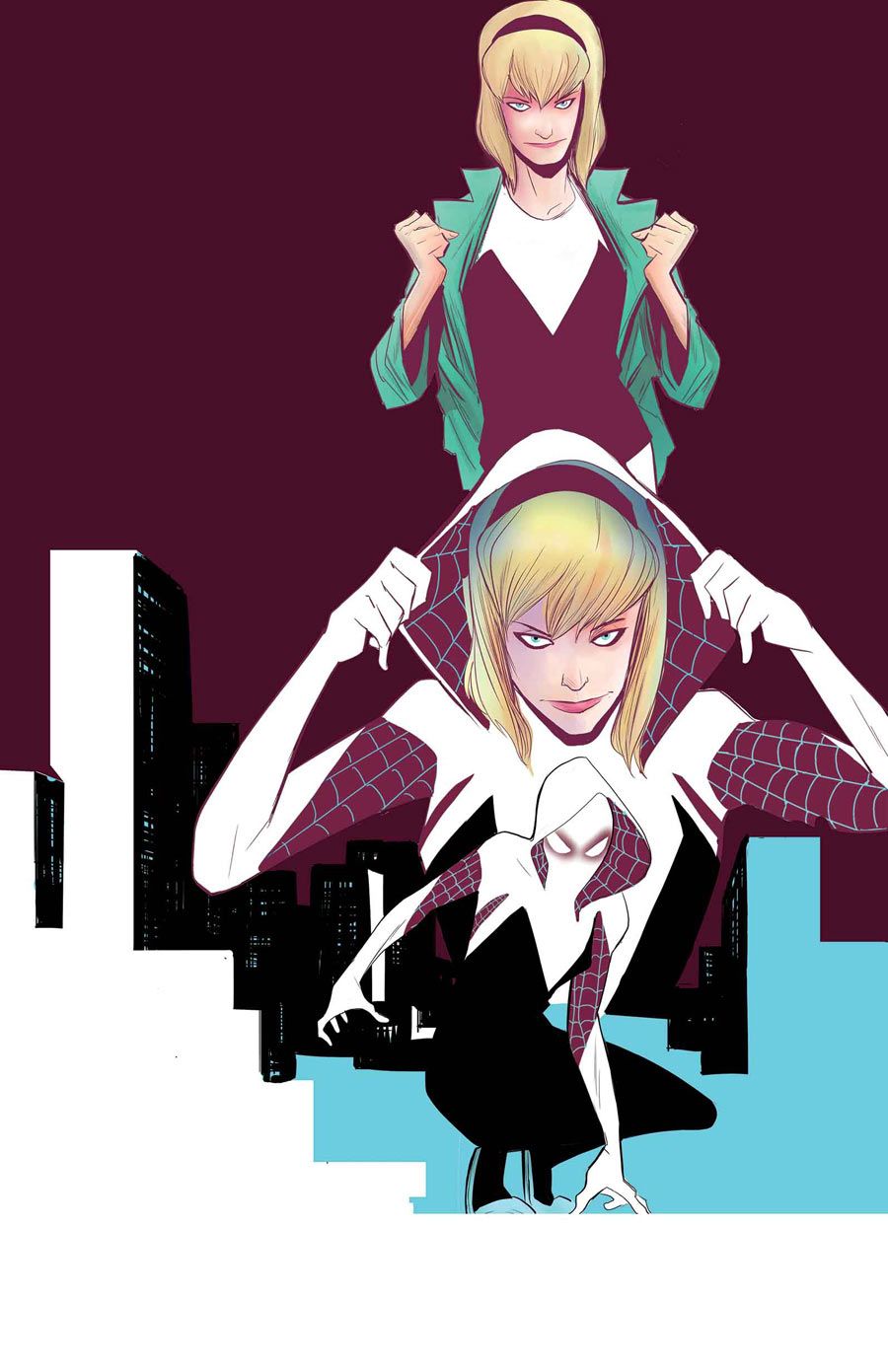In Jason Latour and Robbi Rodriguez's "Edge of Spider-Verse" #2, a Midtown High Schooler manifests some spectacular new abilities -- from wall crawling to a precognitive sixth sense -- after a radioactive spider bite and pledges their life to crime fighting after a preventable personal tragedy. Sound familiar? It should, but this isn't Peter Parker we're talking about. In fact, Peter shows up for all of one splash page before his untimely death motivates none other than Gwen Stacy to take up the superhero cause as your friendly neighborhood Spider-Woman. Bombastic and brimming with fun, "Edge of Spider-Verse" #2 tells a fully realized story that briefly leans on Spider-Man mythos before taking off in its own electrifying direction.
Beyond their shared origin, Gwen and 616's Peter Parker beg no comparison. Latour and Rodriguez work their audiences' familiarity with the main Marvel universe magnificently, cherry picking recognizable characters and situations in order to take care of Gwen's origin in one fell swoop. As such, when Latour and Rodriguez's world arrives, it's completely established, which ultimately gives the story much more room to strut its stuff. It's easy to become immediately and entirely immersed in this alternate universe.
Where Peter had his photography, Gwen flexes her artistic muscle as the percussionist for MJ's band. This serves many purposes beyond developing her character, not the least of which is the book's chic "Scott Pilgrim" vibe. It runs through the whole issue as a deft motif, subtly pulling together the characters and plot by the conclusion. Rodriguez makes the music -- both lyrics and sound -- part of the scenery as opposed to on top of it; colorist Rico Renzi opts for brilliant colors like neon pink to make it pop, but their decision to leave the sound effects without thick, black borders shows just how integral it is to Gwen's life. From the way she loses herself to it in the beginning to the phone call with her father to her promising new gig, the way Latour writes the music into her life takes center stage; it becomes a driving force behind her fight and there is something so palpably youthful and relatable in that.
Although Captain Stacy is no Uncle Ben, he fills the wise mentor role quite nicely. His interactions with her -- including the statement that becomes Gwen's mantra -- walk the fine line that encompasses parental concern and love with a tinge of disappointment. Latour does justice to the sticky situation Gwen finds herself in, balancing her dialogue and narration neatly between her quippy superhero persona, her quieter civilian life, and her struggle to keep them separate. He doesn't pull the emotional punches, particularly in the tense confrontation between Spider-Woman and Captain Stacy, which gives the story a raw if succinct tone.
This review would be remiss without mentioning Gwen's ingenious costume design. It is -- in a word -- brilliant, thanks in huge part to Renzi. Spider-Man may stand out for his primary colors, but it's Gwen's inversion of that -- featuring a largely white and black scheme with a splash of hot pink and Robin's egg blue -- that makes her shine against the blues and soft yellows of the New York City skyline at night. Rodriguez forgoes the standard spandex body suit and adds small touches of personality in her hood, gripped shoes, and paint-marked eyes. The suit feels every inch as pop punk as the character herself.
Beyond that, Rodriguez's figure work excels. He captures the vivacity the Mary Janes and the elasticity of Gwen's abilities, playing fast and loose with the way the characters hold themselves. However, he still manages to pull off the scenes with more gravitas, such as the poignant encounter between Gwen and her father, with dramatic close ups and genuine facial expressions. His work has an enduring intensity, whether this contributes to the high-flying action or personal interactions. As strong as Rodriguez's skill is in this issue, his characters suffer when the focus pulls back; that is, he chooses not to ink the facial expressions of characters in the distance, which softens the lines to the point of obscurity and thereby loses detail.
Further, letterer Clayton Cowles reasserts Gwen's role as the one and only Spider-Woman by using the same narrative box style that runs in the "Amazing Spider-Man," in the form a spider symbol that indicates her thought box. His work fluidly and unobtrusively wends its way through the story, always encouraging an easy-to-follow narrative flow, although his font choice has a confusing similarity between its "Ps" and "Ds."
"Edge of Spider-Verse" #2 is everything that you didn't know you wanted in a Spider-book. Just like her debut, Gwen Stacy is unapologetically loud, driven, and a little rough around the edges but sure to charm her way into readers' hearts.

